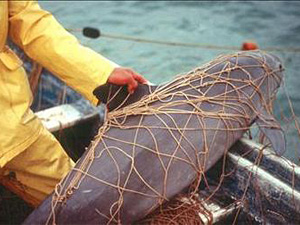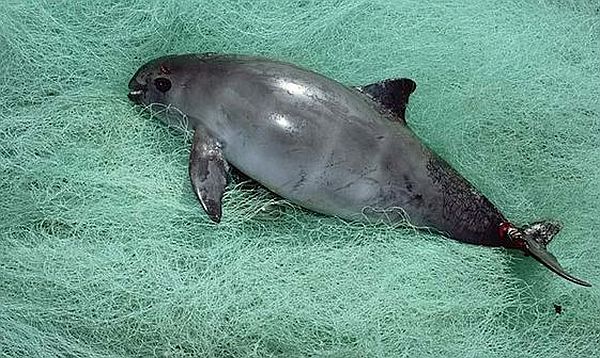A new report about the situation of the world’s smallest porpoise raises concerns over the survival of the species. With fewer than 25 breeding females estimated to be left and the totoaba fishing season about to get underway, this month could determine the future of the species.
The report, produced with the help of the World Wildlife Fund, Comisión Nacional de Áreas Naturales Protegidas, and US Marine Mammal Commission, shows how nets used to catch the totoaba fish have devastated the vaquitas porpoise population.
At the last meeting of members of the conservation group set up to protect the vaquitas, Comité Internacional Para La Recuperación de la Vaquita, or CIRVA, in 2012, there was an estimated population of 200 individuals. Two years later and the number has halved with less than 25 thought to be breeding females. At current rates of population decline the species is set to go extinct by 2018 but if the breeding females are particularly hard hit as by-catch this month then it may be the end for the species.
The vaquita porpoise lives in the Sea of Cortez along the coast of Mexico. Unfortunately their habitat also coincides with the habitat of the totoaba fish – and the swim bladders of the totoaba are a popular delicacy with Chinese diners. With the fishing season about to start the deadly by-catch could sign the end of the vaquita species if the breeding females are lost this year.
 |
The scientists and conservationists from CIRVA are now calling on the Mexican government to introduce emergency legislation to completely ban fishing with gillnets throughout the range of the vaquitas and not just the Colorado River Basin region.
CIRVA are also calling on both the government of Mexico and the international community to tackle the illegal fishing and trade in products from totoabas – also endangered and covered by CITES trade restrictions – to help conserve the last 97 individuals remaining.
One of the threats to the vaquitas are gillnets used by the fishermen of the northern Gulf of California and CIRVA is calling on more help to train the fishermen to use more targeting fishing gear such as shrimp nets to reduce the by-catch of vaquitas.
The biggest threat though comes from the growing illegal fisheries for the endangered totoaba fish. This large fish can grow to over six feet in length but it is just the swim-bladder that has commercial value to the markets in China. Here the swim-bladders are used in soups and as a medicinal ingredient. The rest of the fish is left to rot on the beaches and shores of the Mexican coast.
With local fishermen being able to make $17,000 US per pound for the swim-bladders it is a lucrative market for those willing to take the chance. With legal fishermen making an average of $17,000 US per year, the totoaba fishery is tempting.
Original Story


